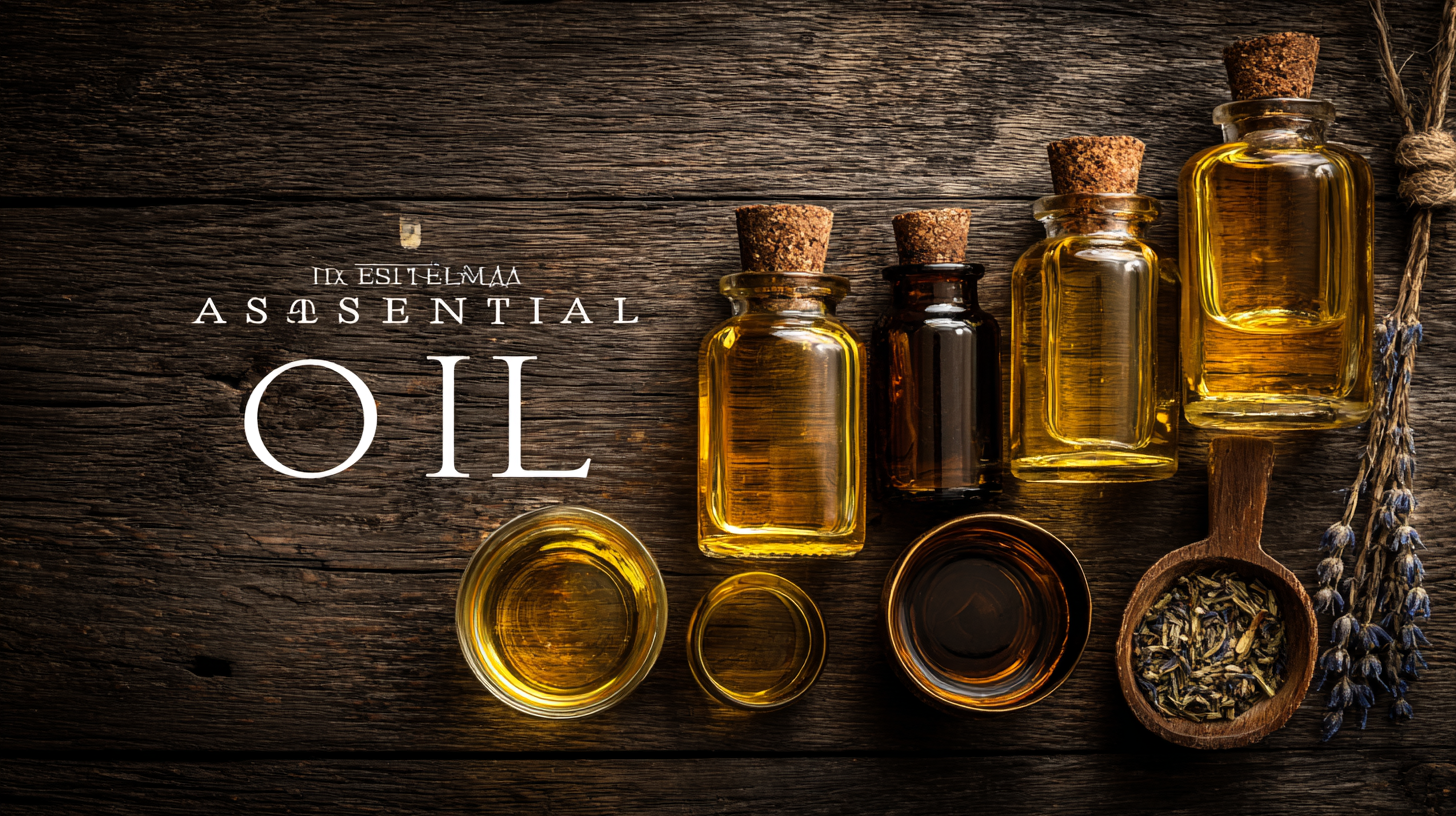

As the global market for essential oils continues to expand at an impressive rate, it is projected to reach USD 13.94 billion by 2025, according to a report by Grand View Research. This growth is driven by increasing consumer awareness regarding the therapeutic benefits of essential oils, alongside rising demand in sectors such as personal care, cosmetics, and aromatherapy. The popularity of natural and organic products is further propelling the essential oil market, as consumers seek alternatives to synthetic chemicals in their wellness routines.

Additionally, the proliferation of e-commerce platforms is making essential oils more accessible to a broader audience, creating myriad opportunities for industry players. With these trends in mind, this blog will explore the most significant essential oil trends anticipated by 2025, examining the factors fueling their rise and the implications for consumers and businesses alike.
The essential oil market is undergoing a significant transformation as consumer preferences evolve, driven by a growing awareness of holistic health and wellness. By 2025, we expect to see a pronounced shift towards organic and sustainably sourced oils as more consumers prioritize products that align with their ethical values. The demand for transparency in sourcing and production processes is becoming a crucial factor in purchase decisions, with brands that can demonstrate their commitment to environmental sustainability gaining a competitive edge.

Moreover, the rise of aromatherapy and wellness practices is influencing consumer choices, leading to a surge in the popularity of essential oils that promote relaxation, stress relief, and mental clarity. Blends specifically designed for emotional well-being, like calming lavender or invigorating citrus, are set to dominate the market. Additionally, the increasing prevalence of DIY culture encourages consumers to experiment with their own blends, driving interest in educational resources surrounding essential oil usage and benefits. As we approach 2025, brands that can cater to these emerging trends while educating consumers will likely establish a strong presence in the essential oil landscape.
The essential oils market is witnessing innovative applications across various industries, with a projected compound annual growth rate (CAGR) of 8.6% from 2020 to 2025, according to a recent report by Market Research Future. This growth is not only driven by the increasing demand for natural and organic products but also by the expanding use of essential oils in sectors such as cosmetics, food and beverage, and even in pharmaceuticals. For instance, the cosmetic industry is incorporating essential oils for their therapeutic properties, enhancing everything from skincare to aromatherapy products.
In the food and beverage sector, essential oils are being used not only for flavor enhancement but also for their antimicrobial properties. A study published in the Journal of Food Science indicated that certain essential oils, like oregano and thyme, can effectively reduce foodborne pathogens, making them valuable additives in food preservation. This trend signifies a move towards cleaner, safer food solutions powered by nature.
Tip: When selecting essential oils for various applications, always look for high-quality, organic options that are free from synthetic additives.
Companies venturing into the pharmaceutical realm are also exploring essential oils for their health benefits. Research shows that oils like tea tree and eucalyptus have properties that can support immune function and respiratory health. As industries continue to innovate with essential oils, staying informed about sourcing and efficacy will ensure you are ahead in this growing market.
Tip: Consider attending industry conferences or webinars to learn more about the latest trends and innovations in essential oil applications.
As the essential oil market evolves, sustainability and ethical sourcing have emerged as critical pillars shaping the industry's future. According to the Global Essential Oils Market Report, the market is projected to reach $13.25 billion by 2025, influenced by increasing consumer awareness around environmental impacts and social responsibility. This trend is driving manufacturers to adopt eco-friendly practices, such as sourcing oils from fair trade suppliers and implementing sustainable extraction methods. For instance, distillation techniques that utilize renewable energy are gaining traction, significantly reducing carbon footprints.

In line with these trends, companies are investing in transparent supply chains that prioritize ethical sourcing. The 2022 Essential Oils Sustainability Report highlights that nearly 60% of consumers are willing to pay more for products that demonstrate responsible sourcing practices. Brands that communicate their sustainability efforts not only enhance their credibility but also build deeper connections with socially conscious consumers. As the demand for ethically sourced essential oils grows, industry stakeholders must continue to innovate and embrace practices that align with sustainability, ensuring that the benefits extend to both people and the planet.
The essential oil market is experiencing significant evolution, driven largely by technological advancements in extraction processes. Recent developments in low-temperature extraction techniques are revolutionizing how essential oils, such as lavender and mugwort, are sourced. These innovations not only enhance the purity and quality of the oils but also help in preserving the delicate aromatic properties that are essential for therapeutic applications. For instance, companies are increasingly adopting modern biotechnological methods to extract plant essences in a more sustainable and efficient manner.
Moreover, the growing demand for natural ingredients in wellness and aromatherapy products is pushing industries to explore new avenues for essential oil extraction. With the rising popularity of aromatherapy and its recognized benefits, the market is poised for robust growth. As seen in recent conferences and workshops, stakeholders from various sectors are coming together to exchange knowledge on quality development frameworks, underscoring the importance of high-quality raw materials and technological integration. This collaborative spirit is set to drive further advancements, ensuring that the essential oil industry not only meets consumer expectations but also contributes to ecological sustainability.
The global market for essential oils is poised for significant growth leading up to 2025, driven by an increasing demand for natural and organic products across various industries. As consumers become more health-conscious and environmentally aware, essential oils are being recognized for their therapeutic benefits and versatility. This shift in consumer behavior presents a multitude of opportunities for key players in the market, particularly in regions where natural products are gaining traction.
Regional insights reveal that North America and Europe will continue to dominate the essential oil market due to their established wellness culture and the rising popularity of aromatherapy. However, the Asia-Pacific region is expected to witness the highest growth rate, fueled by expanding consumer bases in countries like India and China, where traditional medicine practices align with modern wellness trends.
Companies focusing on innovation and sustainability will have a competitive edge, allowing them to capture market share and cater to the evolving preferences of consumers seeking effective and eco-friendly solutions in their lifestyle choices.